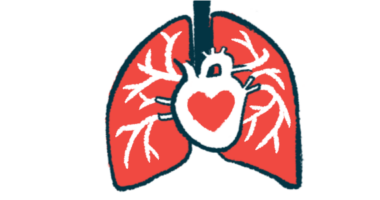Preterm infants with PH benefit from iNO, surfactant treatment
Study: It significantly reduced risk of developing bronchopulmonary dysplasia

Treatment with inhaled nitric oxide (iNO) and pulmonary surfactant within the first three days of life significantly reduces the risk of developing bronchopulmonary dysplasia (BPD) associated with pulmonary hypertension (PH) in preterm infants, according to a recent study in China.
“Early intervention using iNO and PS appears to be a hopeful approach for enhancing respiratory outcomes in this vulnerable group of infants,” researchers wrote. Pulmonary surfactant is a mixture of fat-like molecules and proteins that lines the tiny air sacs in the lungs to reduce surface tension.
The study, “Inhaled nitric oxide as an independent intervention to lower the risk of bronchopulmonary dysplasia in preterm infants (< 33 weeks) with pulmonary hypertension within the initial 3 days of life,” was published in the journal Scientific Reports.
Treatment with iNO linked to much lower incidence of BPD
BPD is a chronic lung disease that occurs when a baby’s lungs aren’t fully developed and primarily affects preterm infants. The presence of PH further increases the risk of developing BPD. Treatment with iNO may help improve oxygen levels in term and near-term infants — those born after 34 weeks of gestation, or the time since the last menstrual period — with respiratory failure due to low oxygen associated with PH. However, studies in preterm infants born earlier in pregnancy have shown inconsistent results.
“Given the high stakes involved in the management of BPD and PH, particularly in the vulnerable population of preterm infants, the potential of iNO as a therapeutic option remains an area of active research and investigation,” the investigators wrote.
To learn more, researchers in China conducted a retrospective analysis of the short-term effects of iNO administration early in life, both alone and in combination with pulmonary surfactant, on the incidence of BPD in preterm newborns born before 33 weeks of gestation who showed signs of PH. Incidence refers to the rate of new cases.
In total, the study included 56 preterm infants who developed PH within the initial three days of life. Twenty-six developed BPD, while 30 did not.
Given the high stakes involved in the management of BPD and PH, particularly in the vulnerable population of preterm infants, the potential of iNO as a therapeutic option remains an area of active research and investigation.
Although the BPD group had lower gestational age (27.9 weeks vs. 29.2 weeks in the non-BPD group), no other significant differences were noted in perinatal, or the time immediately before and after birth, factors between the two groups.
However, infants in the non-BPD group used pulmonary surfactant significantly more than those in the BPD group (70% vs. 34.6%). The non-BPD group also used iNO significantly more (56.7% vs. 11.5%). Retinopathy of prematurity, a serious eye disease affecting premature infants, was more frequent in the BPD group (38.5% vs. 3.3% in the non-BPD group).
Treatment with iNO was associated with a significantly lower incidence of BPD compared to no such treatment (15% vs. 63.9%). The use of pulmonary surfactant also was associated with a lower incidence of BPD compared to no such treatment (30% vs. 65.4%).
In addition, those who received pulmonary surfactant only (43.8%) and those who received neither iNO nor pulmonary surfactant (80%) had significantly higher rates of BPD than those treated with iNO combined with pulmonary surfactant (14.3%) and iNO alone (16.7%).
A multivariate analysis — based on the relationships between several variables — confirmed that both iNO and PS acted as independent protective factors against the development of BPD.
Overall, “these findings highlight the potential benefits of iNO and [pulmonary surfactant] as preventive therapies in this high-risk population,” the researchers wrote. “Further prospective studies are needed to validate these results and guide clinical practice.”







